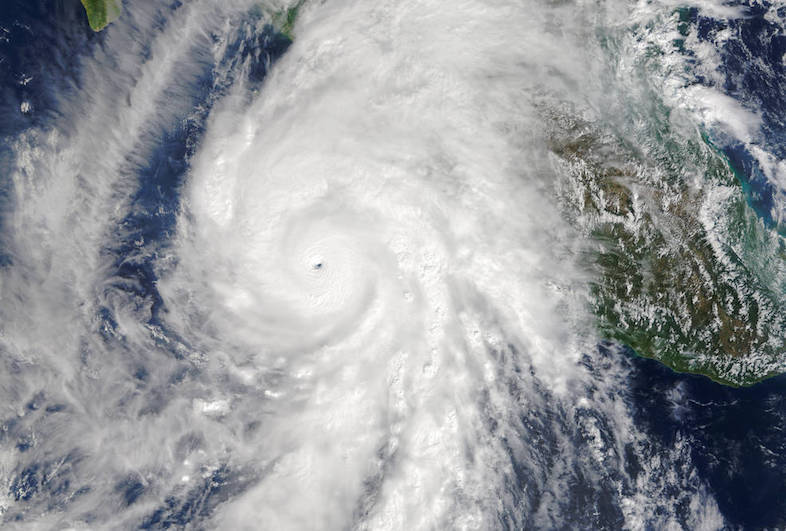News | February 23, 2016
El Niño 2015-16: As California waits, Latin America is hit hard

Hurricane Patricia, part of a busy 2015 hurricane season in the North Pacific driven partly by warm El Niño waters. Image credit: NASA's Earth Observatory
While El Niño has so far failed to deliver heavy rain to Southern California, its effects have been decisive—and devastating—in Latin America, says climate researcher Veronica Nieves at NASA’s Jet Propulsion Laboratory.
“We have been distracted and disappointed with El Niño in California, but let’s not forget that El Niño had a huge impact in Central and South America during the past six months,” said Nieves, who tracks El Niño using satellites and a widespread array of floating sensors known as Argo floats.
The regional climate phenomenon, an expanse of warmer-than-normal water in the eastern tropical Pacific, is often associated with significant late winter downpours, even mudslides and flooding, in Southern California. And the unusual strength of the present El Niño had raised expectations.
While heavy rains could still come, the late-season peak of this year’s El Niño is now raising concerns.
The contrast with Latin America is stunning. Last month, Colombia saw widespread, destructive wildfires because of rising temperatures associated with El Niño. El Niño-related river flooding since December has forced at least 200,000 people to evacuate their homes in Paraguay, Paraná and Uruguay. And Hurricane Patricia, again El Niño fueled, destroyed 3,500 homes and damaged 8,650 acres of land in Mexico in October.
“The Pacific coasts in Central America, as well as the southern Amazon, usually remain warm and dry, increasing susceptibility to forest fire occurrences,” Nieves said. “In contrast, Central America along the Caribbean coasts experience excessive and persistent rainfall, with the consequent intense flooding and landslides. Similar impacts can be found on the coasts from Ecuador to southern Chile.”
Millions in these areas also are subject to heat stress, malnutrition and increased costs to fight diseases such as malaria, dengue and cholera. El Niño also has likely helped spread the Zika virus.
Latin America, Nieves said, has suffered climate-related damages amounting to billions in U.S. dollars over the past three decades, including the devastating effects of El Niño events in 1982-83 and 1997-98. And while El Niño’s effects can be felt around the world, the 19.9 million square kilometers of Latin American and the Caribbean have an outsized influence on Earth’s climate. They include the planet’s greatest reserves of freshwater and highest diversity of plant species.
“We should continue to increase public awareness of the vital impacts that El Niño is causing in Latin America and the Caribbean, as its impacts will continue for many months to come,” Nieves said. “No podemos bajar la guardia! (Let’s not let down our guard!).”


